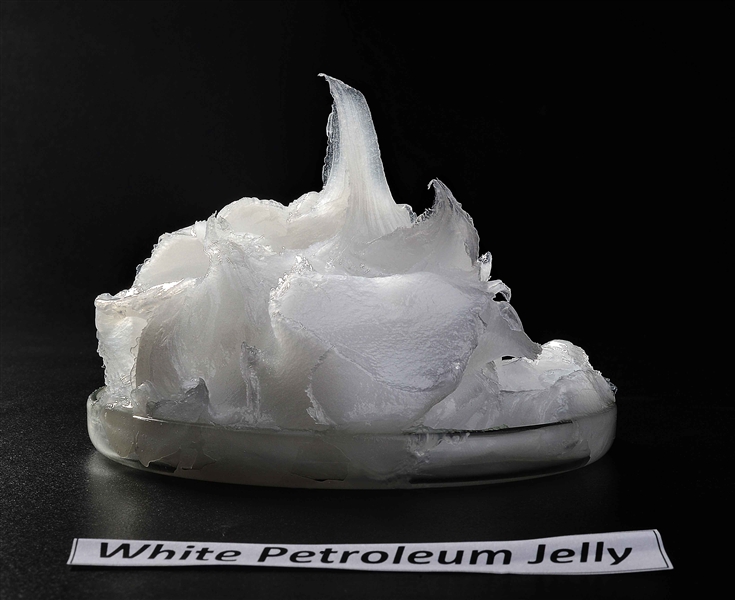
Petrolatum
What is petrolatum
The residue wax of distillation after de-waxing called Petrolatum. Its crystals are smaller than the previous two types f crystals and keep some oil in it so that they are usually gelatin type.
Its Molecular mass is between 560 and 980 and melting point is 55 -85° C. When they want to spread Petrolatum without the use of solvents and heat, they use it in water emulsion shape. For this purpose, a mixture of melted wax in hot water using an emulsifier such as ethanolamine tetra should be made.
Medical Definition of petrolatum
a neutral unctuous substance that is practically odorless and tasteless and is insoluble in water, that is obtained from petroleum and differs chemically from paraffin wax in containing unsaturated hydrocarbons or naphthenes as well as alkanes, and that is produced in several forms: as
a: a yellowish to light amber semisolid mass used chiefly as a base for ointments and cosmetics, as a protective dressing, and in lubricating greases—called also petroleum jelly, yellow petrolatum
b: a white or faintly yellowish mass obtained by decolorizing yellow petrolatum and used similarly to it—called also petroleum jelly, white petrolatum, white petroleum jelly.
Why is it used in cosmetics and personal care products?
In cosmetics and personal care products, petrolatum is used in the formulation of a variety of product types, including bath products, cleansing products, skin care products, makeup, shampoos, permanent waves, hair conditioners, shaving products, and suntan products. As an OTC drug petrolatum, it can also be used to temporarily protect injured or exposed skin from harmful or annoying external sources that cause rashes and scratches while also providing relief to the skin. Furthermore, petrolatum slows the trans epidermal water loss (TEWL) from the skin by forming a barrier on the skin’s surface. It enhances the appearance and feel of hair, by increasing hair body, suppleness, or sheen, or by improving the texture of hair that has been damaged physically or by chemical treatment.
There is a common misconception that petrolatum and glycerin react similarly and exhibit the same properties. However, they are not the same. Petrolatum is hydrophobic (i.e., water-repelling) and insoluble in water. It acts by forming a protective barrier that traps moisture in the skin. Glycerin, on the other hand, is strongly hydrophilic (i.e., water-attracting). By absorbing moisture from the air, glycerin acts to moisturize the skin. Glycerin thus produces the feeling of wetness on the skin. Petrolatum is one of the main treatments dermatologists recommend for dry skin.
Scientific Facts
Petrolatum, or white petrolatum, belongs to a class of chemicals referred to as hydrocarbons, a group of compounds containing only carbon and hydrogen. Hydrocarbons are generally derived from petroleum, but some of them are also found naturally in the plant and animal kingdom. While the source of petrolatum (petroleum) often leads to criticism of its use, one must remember that the great majority of consumer products used worldwide, including plastic bottles and ink pens to automobile tires, telephones, and fabrics are all prepared from petroleum. The petrolatum used in cosmetic products is extracted and purified from the petroleum, not unlike the extraction and purification of vegetable oils. Whereas vegetable oils are often obtained from solid materials, white mineral oil is obtained from a liquid source. The petrolatum used in cosmetic and personal care products is a very highly refined, purified form of the ingredient. The purity of cosmetic grade is also evident from its allowed uses in the U.S. as OTC skin protectant , and in OTC ophthalmic and anorectal drugs.

